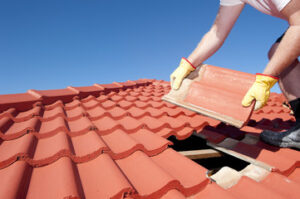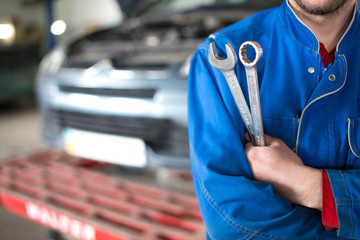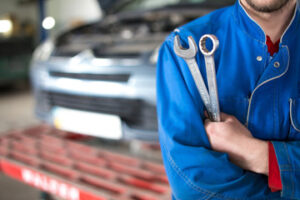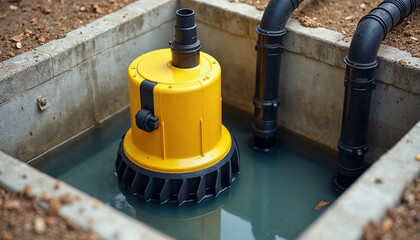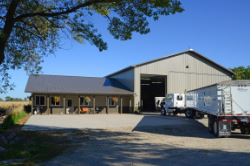Concrete Contractors McKinney TX are experts in constructing and installing concrete surfaces. They conform to building codes for safety and make sure their work looks good.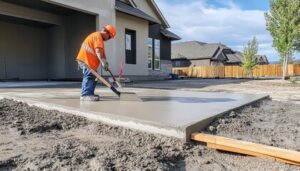
The right contractor will listen to your needs, deliver clear explanations and professional advice throughout construction. They should also provide warranties and guarantees for their services.
Concrete is one of the most common building materials, used to construct everything from skyscrapers to home foundations. The material’s versatility, durability, and strength make it a crucial component in many construction endeavors, especially those that require precision and skill. A qualified concrete contractor can offer expert feedback and assistance with design and construction, ensuring that the finished product is safe, functional, and aesthetically pleasing.
When hiring a concrete contractor, it is important to consider their experience and reputation. Ask them about their past projects and check out online reviews to determine if they are the best fit for your project. You may also want to consider their licensing and insurance. Having a valid license is a good indication that the contractor is qualified and adheres to professional standards.
A well-executed concrete project requires precise measurement, quality control, and timely completion. A licensed concrete contractor understands local codes and ensures that all work meets or exceeds requirements, avoiding costly fines and legal issues. They should also follow environmental guidelines and welcome third-party inspections. Additionally, a reputable concrete contractor will have a detailed process for handling customer concerns and complaints.
Before selecting a concrete contractor, be sure to check their references and ask about previous projects that are similar to yours. They should be able to provide you with photos and contact information for previous clients. You can also ask about their equipment and the project’s timeline. Lastly, be sure to get a written contract detailing the price and scope of the project to avoid any misunderstandings.
Choosing a concrete contractor can be a difficult task, but by doing your research and following these tips, you can find the perfect person for the job. By taking the time to choose a concrete contractor with experience, a solid reputation, and professionalism, you can rest assured that your project will be completed accurately and efficiently.
If you are looking for a qualified concrete contractor, start your search by asking friends and family for recommendations. You can also check out online review sites to find a concrete contractor with positive feedback.
Reputation
Concrete Contractors mix, lay, spread, compact, and finish concrete to create foundations, slabs, paths, driveways, garage floors, and more. They use cement mixers, cement trucks for buildings, and heavy-duty tools to cut up old concrete to prepare sites for new construction. They also remove and dispose of waste materials, such as crushed stone, wood, and metals.
When hiring a concrete contractor, look for one with an excellent reputation and experience. Ask for references from previous clients and check online reviews. A thorough search prevents hiring unqualified contractors who may ruin the project and increase costs. A high rating indicates consistent quality and reliability, while a low rating reveals recurring issues.
Contractors with experience will have a better understanding of how to complete projects on time and within budget. They will be able to anticipate challenges and develop solutions to overcome them, saving you both time and money. They will also be able to provide insight into the best materials and methods for your project.
A good contractor will prioritize safety and quality work, using only the highest-quality materials and ensuring that all construction is done according to industry standards. This attention to detail will ensure that your concrete project is both safe and beautiful.
Local contractors are familiar with the building codes and regulations in your area, making them a great choice for residential or commercial projects. They are also more likely to be licensed and insured, which will give you peace of mind that they are qualified for the job.
Hiring a concrete contractor is an investment in your home or business. It is important to find a reputable and experienced professional to avoid costly mistakes that can impact the value of your property. A licensed concrete contractor will be able to help you select the right material for your project, and they will be able to install it quickly and efficiently.
The best way to find a concrete contractor is to request quotes from several companies and compare prices and services. Be sure to include detailed information about your project, such as the scope of the work, timelines, and specifications for materials. A good concrete contractor will be honest and upfront with you about their pricing and services. It is also a good idea to read public reviews on websites like Google, Yelp, and Facebook.
Attention to Detail
Attention to detail is the ability to focus on small aspects of a task and ensure that the end result is error-free. This skill is essential in many professions, and it can help you stand out from the competition in a job search. Attention to detail is a soft skill, and it can be learned through practice and intentional effort. Some ways to improve your attention to detail include breaking tasks into smaller steps, using tools like checklists, and minimizing distractions to increase focus.
Aside from being a crucial professional skill, attention to detail can also be a significant factor in building trust with colleagues and clients. When people trust that you’ll get the job done right, they’re more likely to give you their business. In addition, it’s important to note that being detail-oriented can also lead to higher work productivity and efficiency. This is because you’ll be less likely to make mistakes when you’re completely focused on the task at hand.
While being detail-oriented can certainly be a beneficial trait, it’s not always easy to maintain. For instance, when a task is complex and has several moving parts, it can be difficult to keep track of all the little things that need to be taken care of. This is especially true when you’re rushed or stressed. In order to reduce your risk of making a mistake, it’s a good idea to take the time to thoroughly review your work before you send it off.
The final aspect of attention to detail is being able to identify errors and correct them. This requires a high level of analytical thinking and the ability to see potential problems before they occur. This is a critical component of being a quality control engineer, but it’s also an important attribute for anyone who works with information or data.
Attention to detail is a crucial soft skill that can be developed through practice and intentional effort. By taking the time to proofread your work, you can avoid costly errors that may undermine your credibility in the workplace. In addition, identifying your strengths and weaknesses can help you improve your performance in the future.
Communication Skills
During the initial consultation, look for contractors who are active listeners and provide clear explanations of their work. This ensures a strong collaboration between you and your contractor for a successful project outcome. Exceptional contractors also communicate clearly throughout the construction process, keeping you updated on progress and providing professional advice as needed.
Concrete contractors need to have excellent problem-solving skills as they complete a variety of projects, including residential, commercial, and infrastructure projects. They must be able to effectively collaborate with clients, architects, engineers, and other construction professionals to meet project objectives. Additionally, they must have solid time management skills to ensure completion within agreed-upon timelines while maintaining quality work standards.
When evaluating potential concrete contractors, request a portfolio of past projects. Ask about the scope and complexity of each job to see how well they handled challenges that arose. Additionally, look for specialty certifications related to concrete staining or stamping. These certifications show that the contractor is committed to advancing their knowledge of concrete construction techniques and best practices.
A passion for the craft is another important trait to consider. A contractor with a genuine love for concrete is invested in their craft and finds fulfillment in creating something that is both durable and beautiful. This passion is reflected in their workmanship, which is characterized by precision and attention to detail.
In addition to technical expertise, concrete contractors need to be knowledgeable of building codes, regulations, and industry standards. They should also have a thorough understanding of the materials used for concrete construction, such as different types of cement and aggregates. Additionally, they should be familiar with best practices for installing formwork, pouring concrete, and curing the concrete.
When hiring a concrete contractor, be sure to check for a valid license and adequate insurance coverage. Additionally, ask about their work history and whether they have any certifications from the Occupational Safety and Health Administration. This will help you to determine if they prioritize a safe working environment for their team and clients. Lastly, inquire about the contractor’s adherence to environmentally responsible concrete construction practices.


